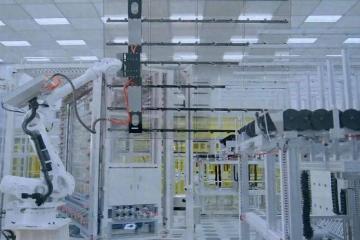Unveiling the World of Commodity Trading
Advertisements
In the intricate tapestry of the global economy, commodity trading stands out as a cornerstone that significantly influences our daily livesOften, we overlook the underlying forces that contribute to our everyday transactions—whether it’s fueling our cars, purchasing the latest smartphone, or savoring a cup of artisanal coffeeEach of these actions is deeply intertwined with the international trade of natural resources, a process expertly navigated by commodity traders who act as the conduits of these exchangesThese traders operate across a vast commercial landscape, spanning from agricultural fields to mining sites, and from oil reserves to natural gas fields, thus affording them a unique position at the nexus of global economic activity.
Despite their pivotal role, commodity traders remain enigmatic figures to manyThey possess an exceptional ability to turn information into advantage, utilizing complex contracts and hidden channels to shape a world that is largely unknown to the general populace
Advertisements
This clandestine realm is artfully explored in the book "The World of Trading," authored by British writers Javier Blas and Jack Farchy, who aim to peel back the layers and provide readers with insights into this often-misunderstood field.
The business model of commodity traders can be distilled to a straightforward premise: they procure natural resources at one time and place, only to sell them at another, capitalizing on the disparities in time and fluctuating supply and demandA telling example of this occurred in 2020, when the COVID-19 pandemic drastically curtailed global economic activities, grounding flights and restricting travelThis environment contributed to a notable decline in oil prices, with West Texas Intermediate (WTI) crude oil futures even experiencing a rare and bewildering phenomenon of "negative pricing," where sellers had to pay buyers to take oil off their hands
Advertisements
Many savvy commodity traders swiftly seized this opportunity, stockpiling oil in anticipation of a future demand rebound, thus reaping substantial gains as the market recovered.
Central to understanding the nature of commodity trading is the duality of risk and speculationTraders are drawn to the potential for enormous profits derived from unpredictable market conditionsTheir operations are not limited to stable environments; they frequently venture into volatile regions, viewing challenges as mere opportunities for profitThese astute individuals excel at arbitrage, deftly maneuvering through the complexities of supply chains and geopolitical landscapesAs David MacLennan, the executive chairman and former CEO of Cargill, aptly noted, "This is not for the faint of heartCargill's history lies in going to places that others are unwilling to go, where opportunities aboundCrises, threats, and high risks all translate into opportunities."
The evolution of commodity trading has been largely fueled by the relentless forces of globalization and international trade expansion
Advertisements
Traders harness the pathways of global commerce to amass wealth, orchestrate shipping logistics, and finance operations that link buyers and sellers across continents, thereby fostering an interconnected web of trade.
In their book, Blas and Farchy outline the transformative changes in the oil industry during the mid-20th century, offering an essential context for understanding the rise of commodity tradersThe nationalization of oil fields in the Middle East during the 1970s and 1980s marked a monumental shift in the oil market, dismantling the oligopolistic control held by Western oil companies for decadesThe inception of the Organization of the Petroleum Exporting Countries (OPEC) allowed oil-producing nations to reclaim dominance over their resources, thus empowering independent oil traders to seize opportunities liberated from the constraints imposed by the major oil companies
- Rapid Expansion of Greece's PV Industry
- Waller Hints at Rate Cut: Gold Market in Focus
- Did Tesla’s Price Cuts Hurt Revenue and Boost BYD?
- AI's Rise Fuels Expanding Market Opportunities
- U.S. Mortgage Rates Surpass 7%
Statistics reveal that between 1975 and 1980, the number of independent oil trading companies ballooned to over 300, with companies like Marc Rich & Coemerging as leading profit-makers, competing alongside corporate giants such as General Electric and Ford Motor CompanyThis paradigm shift in the oil market not only redefined the global energy acquisition landscape for decades but also propelled commodity traders into the spotlight as key players of the era.
But the ambition of commodity trading extends beyond oilSince the 1970s, other commodities, including metals, agricultural products, ores, and coal, have captivated the interest of tradersFor instance, during the first decade of the 21st century, major trading firms such as Vitol, Glencore, and Cargill collectively generated an astonishing $76.3 billion in net profits—outpacing the earnings of renowned corporations like Apple and Coca-Cola during the same period

This remarkable success can be attributed in large part to the emergence of new markets, particularly exemplified by the rapid industrialization of China, which sparked a commodity supercycle.
The surge in demand from emerging markets has undeniably captured the attention of the global commodity marketFrom 1998 to 2018, nations such as China, Brazil, India, Indonesia, and Mexico—collectively referred to as the BRICS countries—catalyzed a remarkable 92% growth in global metal consumption, a 67% uptick in energy demand, and a 39% rise in food consumptionThis era has been characterized as the "gold rush" of commodity trading, ushering in unprecedented opportunities for traders.
Now, the world stands at the brink of another transformative epoch, which presents new opportunities and challenges for commodity tradersBlas and Farchy assert that the rise of digital information sharing may obfuscate the traditional information advantages held by traders, while the forces of de-globalization threaten to constrict their operational environment